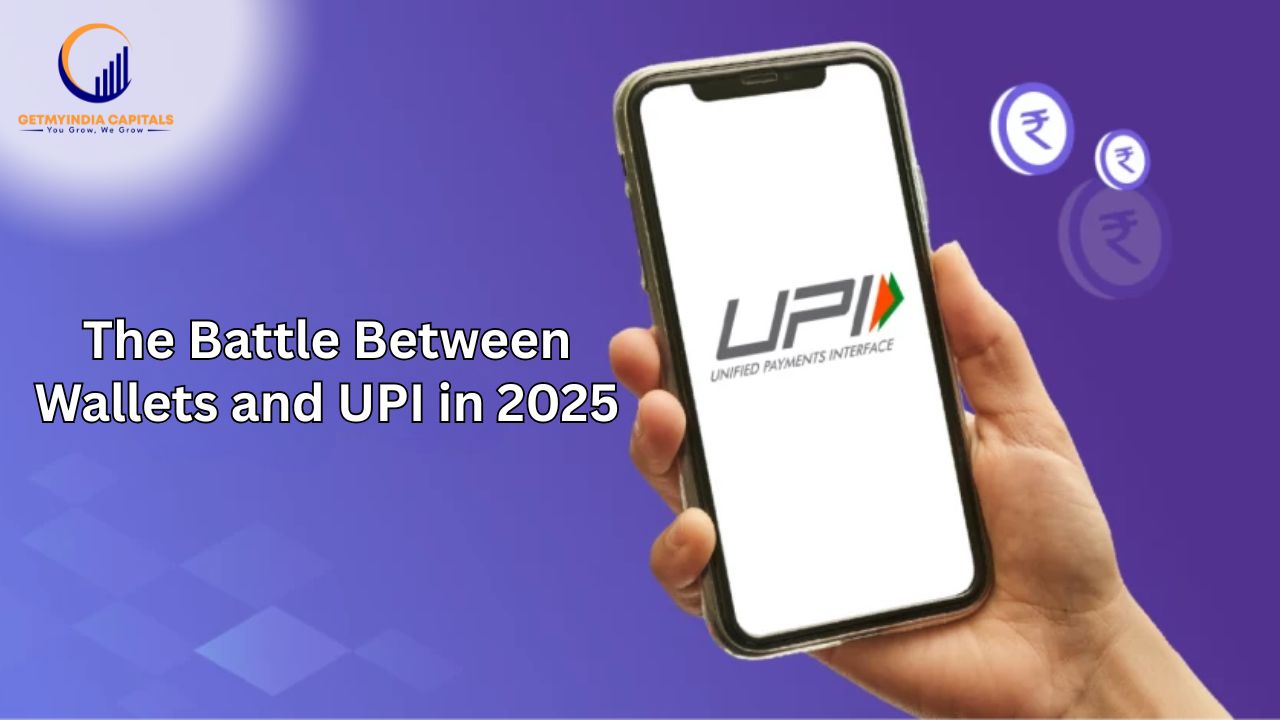Introduction
In recent years, India’s digital payment system has undergone significant transformation. With the increased use of smartphones and the government’s motivation towards a cashless economy, many people have started using digital wallets and new UPI payment apps to make transactions and receive money. While both serve the same purpose of offering speedy and contactless payments, users always ask the question: Should you use digital wallets or UPI for daily transactions in 2025?
Difference between UPI and UPI wallet
UPI has become the go-to payment solution for millions of Indians in the last few years. You must be using UPI for a lot of small-value transactions on a daily basis. Every time you use the traditional bank-to-bank UPI transfer, you enter the UPI PIN of your primary savings account. Do remember that all these transactions will also get reflected in your bank account statements.
However, if the volume of these small transactions is high, your bank statement may get so cluttered that it will become a challenge to use it in a meaningful way when the need arises. Moreover, there are other things you need to keep in mind. Using your main savings bank account for low-value transactions of ₹10 or ₹20, will expose it to more risks, said experts. “UPI QR code interoperability can make transactions safer in the sense that you don’t have to use your bank account for every transaction, which reduces the risk of exposing your primary savings account to fraud and scams. Instead, you can use a prepaid wallet,” said Bipin Preet Singh, Co-Founder & CEO, MobiKwik.
“Additionally, UPI wallets also have advanced security features such as device binding, which ensures that the UPI account can only be accessed from a specific device,” said Ashwin Chawwla, Founder & MD, of Escrowpay.
As more and more people are relying on UPI for all kinds of transactions, at times you notice server failures during bank-to-bank transfers. “UPI wallets offer the convenience of having the funds readily available for making payments without having to transfer money from a bank account each time,” said Chawwla. Moreover, you also have the option to recharge your wallet with credit cards.
Suppose the store does not have a POS machine and your only option is scanning the QR code and paying through UPI. Here, you can easily load your wallet from your credit card and make the payment. “A prepaid wallet that can be loaded via multiple payment methods, such as credit cards or bank accounts via UPI, providing more flexibility and convenience in making payments,” said Singh
Pros of using digital wallets
They are easy to access from your mobile device and convenient for everyone to use.Digital wallets or UPI on wallets work very well when you have to make repeated payments to a certain merchant. They are best if you are seeking to manage the budgeting of daily small expenses. Users frequently get multiple rewards, cashback, and discounts when using their online wallets. E-wallets allow users to make instant payments without wasting time.
Cons of using digital wallets
Consistent use of smartphones and digital wallets has increased dependency on technology. Digital wallets require wallet top-ups every time they are emptied. As compared to UPI, digital wallets are accepted by fewer merchants. Online wallets might impose a fee for transactions or for withdrawals.
Pros of using UPI
Many platforms do not charge fees for using their UPI services. UPI is pretty easy to use for everyone and is available around the clock. Users are not required to preload the money, and transfers are done between banks. By using UPI Lite payment apps, you can make small payments with a low internet connection or in offline mode. UPI is widely accepted by e-commerce platforms and merchants.
Cons of using UPI
Certain banks establish a daily limitation for UPI transactions. With an increase in UPI payments, there might be an increased chance of cyber threats and potential fraud. Users who do not have a smartphone can’t take advantage of UPI payments.
Which One Should You Choose?
Now that you have got a brief overview of both digital wallets and UPI, let’s understand which option will be appropriate for you:
- Use UPI if- Use UPI to pay your utility bills, recharge your mobile phone and DTH services, and make transactions using your new UPI payment app. You want to make transactions directly from your bank account without preloading the money. You want to make quick and safe transactions without paying any extra fees.If you are seeking wide acceptance of online payment services.
- Use digital wallets if- You are a teenager or a user with no bank account and need a preloaded wallet for daily spending. You want to use cashback offers and rewards on partner platforms. Use the convenience of UPI by using UPI on wallet.
Conclusion
Choosing between digital wallets and UPI for daily transactions in 2025 depends on your specific needs. UPI is ideal for seamless, fee-free transactions directly from your bank account, offering wide acceptance and flexibility. It’s perfect for bill payments, quick transfers, and those who want to avoid preloading funds. On the other hand, digital wallets are great for managing small, recurring payments, offering rewards, cashback, and enhanced security features. They provide extra convenience with the ability to load funds from credit cards and are beneficial for users without a bank account. Ultimately, both have their pros and cons, and the right choice hinges on factors like ease of use, transaction volume, and security preferences.
GetMyIndia.com RaysVeda.com GetMyStartup.com LawCanal.com ABHAYRAY.COM ZinCob.com

